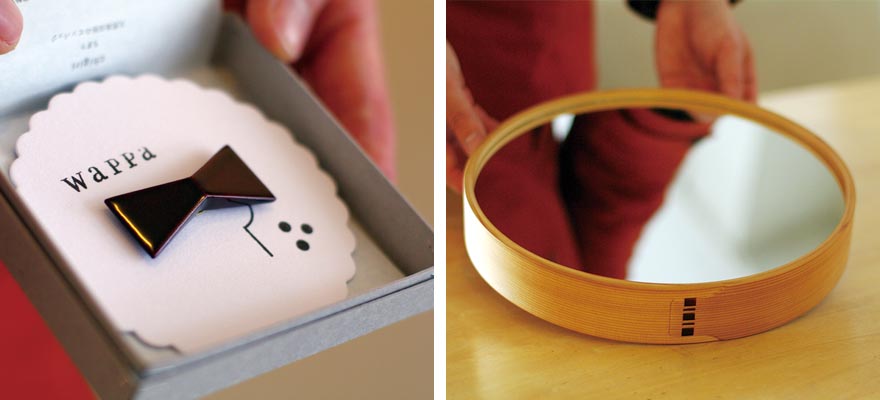Home > Highlighting JAPAN >Highlighting Japan March 2014>Creative roots
Highlighting JAPAN
Creative roots
WAPPA PROJECT
Akita's traditional industry merged with fresh creativity

Located in the Tohoku region of Japan, Akita Prefecture has recently been garnering increasing attention in the field of traditional craftwork. Through efforts such as the April 2013 founding of the Akita University of Art, this northern prefecture aims to foster people who can promote its local culture and traditions to the world.
Odate magewappa is one of the best-known traditional crafts in Akita. Historically made in Odate City, the wa in wappa means 'ring,' while mage means 'to bend.' To form magewappa, wooden boards are soaked in hot water until they become soft enough to be bent into cylinders.
Odate magewappa is made from natural Akita cedar, which has a beautiful, straight grain. The tree's slow growth in Akita's cold temperatures leads to the dense annual rings that result in this unique and delicate grain, going on to create the broad rings that mark magewappa's distinctive natural design. The bent wood is then fixed in place with attractive, reddish-brown cherry bark inserted into the connecting joint.
Japanese cedar is antiseptic and has a high capacity for moisture absorption, which is useful in preventing food from rotting. This makes magewappa bins and bento lunch boxes ideal containers for rice. In fact, a recent boom in homemade bento has drawn people away from store-bought lunches, boosting sales of magewappa lunch boxes to the point that production can't keep up with demand.
In the midst of all this activity, three Akita natives have launched the Wappa Project, aiming to add new value to this traditional craftwork and adapt it for use in modern life. Takuma Ishiyama is project leader of the ZERODATE Art Project, which he established to promote local artists and creators, aiming to set the 'date' back to 'zero' and start Odate's creativity anew. Makoto Tamiya, hailing from Akita City, is in charge of the Wappa Project's branding and market exploration. He heads casane tsumugu, which works to highlight the appeal of local creativity by examining it from new angles, promoting projects and products both inside and outside of Odate. And Norikazu Minato of Minato Furniture, a custom-made furniture studio, is responsible for product design and execution. Minato is from Noshiro, a city famous for its lumber industry and Akita cedar. "I was working with wood all the time," he says, "yet I wasn't doing anything for my hometown. I ran across ZERODATE when I started looking for ways I could get involved."
Minato designed the Wappa Project's Wa MIRROR, which applies Odate magewappa techniques to suspend a mirror between several overlapping cedar bands without the use of nails or adhesives, giving the frame a modern-day sense of volume. Now mass produced by Odate Kougeisya Co., Ltd., a local magewappa craft workshop, this simple yet elegant innovation received the Japan Institute of Design Promotion's Good Design Award in 2013.
The Wappa Project's emblem, the chigiri, exemplifies its aspiration to connect people, regions and resources. The chigiri is a brooch made from the chips left over from magewappa production. Determined to develop a new product that people could wear, Minato found inspiration in the wooden butterfly keys used to prevent cracks in woodwork, the English name being derived from their double-flared butterfly shape. Butterfly keys are called chigiri in Japanese, a word that also means 'bond' or 'promise.' Indicating the chigiri pinned to his shirt, Minato says, "People often approach me when I'm wearing this." And the conversation quickly moves to Akita cedar and magewappa. Tamiya adds, "We hope that our chigiri will give both Japanese people and foreigners a chance to experience the warm aroma and texture of Akita cedar, and touch the story behind Akita's local industries."
The Wappa Project also aims to make information available in multiple languages so that its story can reach people overseas. A Taiwanese company has already shown interest, offering ongoing support to break into the market in Taiwan.
In the Wappa Project, the passion of artists combines with the power of local resources and traditions to create new ideas for the future.
© 2009 Cabinet Office, Government of Japan






